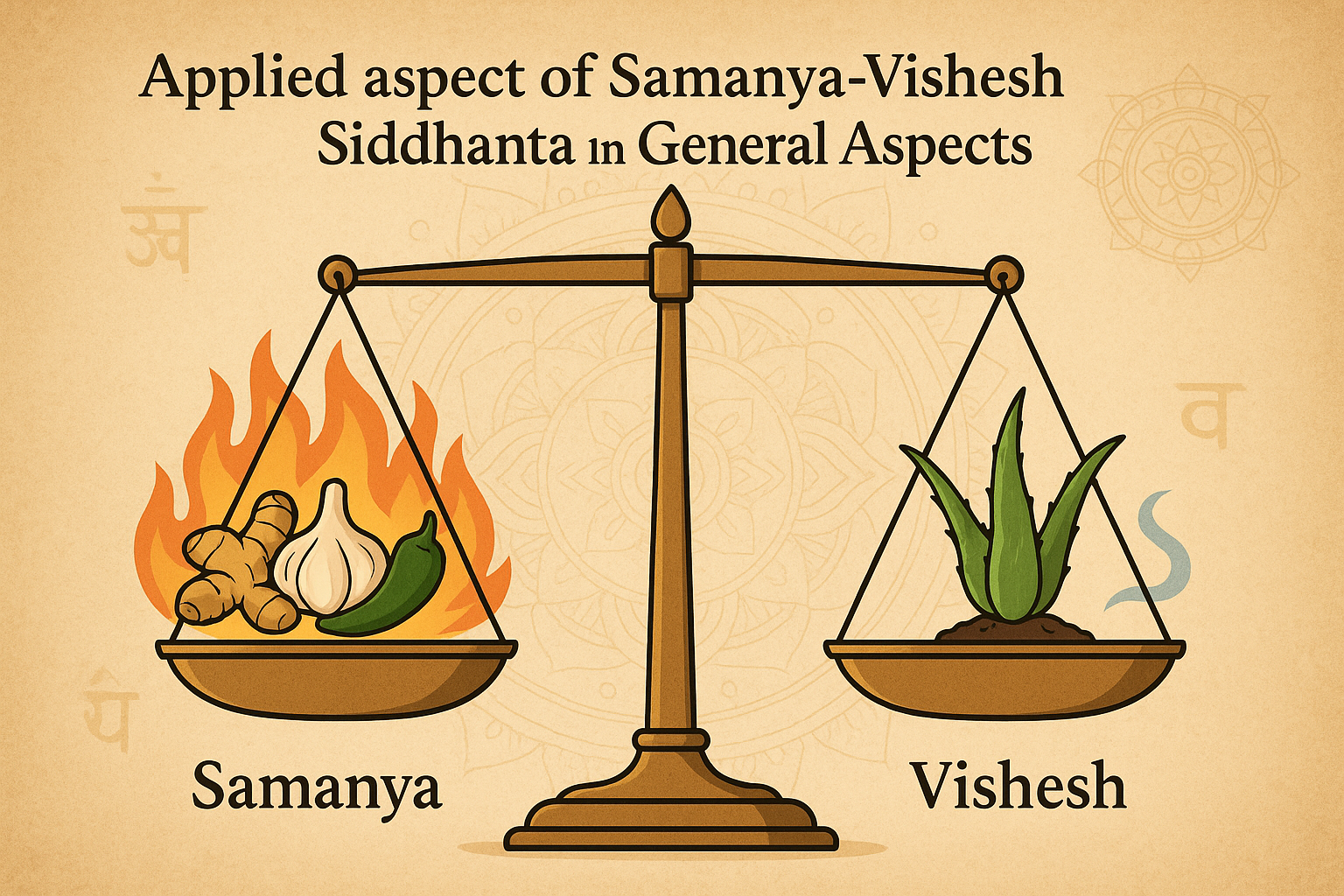Applied aspect of Samanya-Vishesh Siddhanta in General Aspects
DOI:
https://doi.org/10.21760/jaims.10.6.38Keywords:
Samanya-Vishesh, Vriddhi, Kshaya, Dosha, Dhatu, Mala, Ayurvedic Pharmacology & PathologyAbstract
Samanya-Vishesh Siddhanta[1] is a fundamental principle in Ayurveda that explains the concepts of similarity (Samanya) and dissimilarity (Vishesh) in relation to substances, qualities, and actions. This principle plays a crucial role in understanding the physiology of the body, the pathology of diseases, and the mechanism of treatment. According to Ayurveda, Samanya leads to an increase (Vriddhi) of similar attributes, while Vishesh results in a decrease (Kshaya). This concept is applicable in various aspects of life, including dietary practices, drug selection, and therapeutic approaches. For instance, consuming substances with properties similar to the bodily components increases them, while those with opposite properties decrease them. The principle of Samanya-Vishesh serves as the foundation for Ayurvedic treatments, allowing physicians to restore balance in the body by either enhancing or reducing specific qualities. It aligns with the holistic approach of Ayurveda, emphasizing personalized treatments through diet, lifestyle modifications, and targeted herbal interventions. This Siddhanta is not only relevant in classical Ayurvedic formulations but also provides insight into modern pathophysiology by offering a logical framework for understanding the impact of various therapeutic measures on the human body.
Downloads
References
Tiwari PV, editor. Caraka Samhita. Vol. 1. Varanasi: Chaukhambha Vishvabharati; 2016. Ch.Su 1/44.
Tiwari PV, editor. Caraka Samhita. Vol. 1. Varanasi: Chaukhambha Vishvabharati; 2016. Ch.Su 30/26.
Shastri A, editor. Sushrut Samhita: Ayurveda Tatvasandipika Teeka. Part 1. Varanasi: Chaukhambha Sanskrit Sansthan; 2018. Su.Su 21/36.
Shastri K, Chaturvedi G, editors. Charak Samhita. Part 1. Varanasi: Chaukhamba Bharati Academy; 2018. Ch.Su 1/45.
Shastri K, Chaturvedi G, editors. Charak Samhita. Part 1. Varanasi: Chaukhamba Bharati Academy; 2018. Ch.Su 9/4.
Shastri K, Chaturvedi G, editors. Charak Samhita. Part 2. Varanasi: Chaukhamba Bharati Academy; 2018. Ch.Chi 3/286.
Shastri K, Chaturvedi G, editors. Charak Samhita. Part 2. Varanasi: Chaukhamba Bharati Academy; 2018. Ch.Chi 6/53.
Murthy KRS, editor. Ashtang Hridaya Sutrasthan. Varanasi: Chowkhamba Krishnadas Academy; 2017. A.H.Su 9/24.















